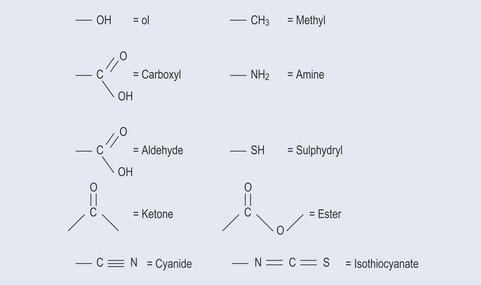Chapter 5 Nomenclature, representation of chemical structures and basic terminology
The Functional Groups
Figure 5.1 demonstrates the different types of functional groups you are likely to see. Each of these functional groups has a characteristic chemical reaction. It is not necessary for you to know these in detail, but it is helpful to appreciate them with regards to a particular pharmacological activity.
Shorthand can sometimes be used for the chemical formulae of short functional groups such as:
There can be quite a variety of these; with a little deduction they are fairly obvious.
Many of these functional groups will be attached to a hydrocarbon backbone, which is composed of carbon and hydrogen atoms (see Chapter 4 ‘Bonds: continued’, p. 24).
Only gold members can continue reading. Log In or Register to continue




